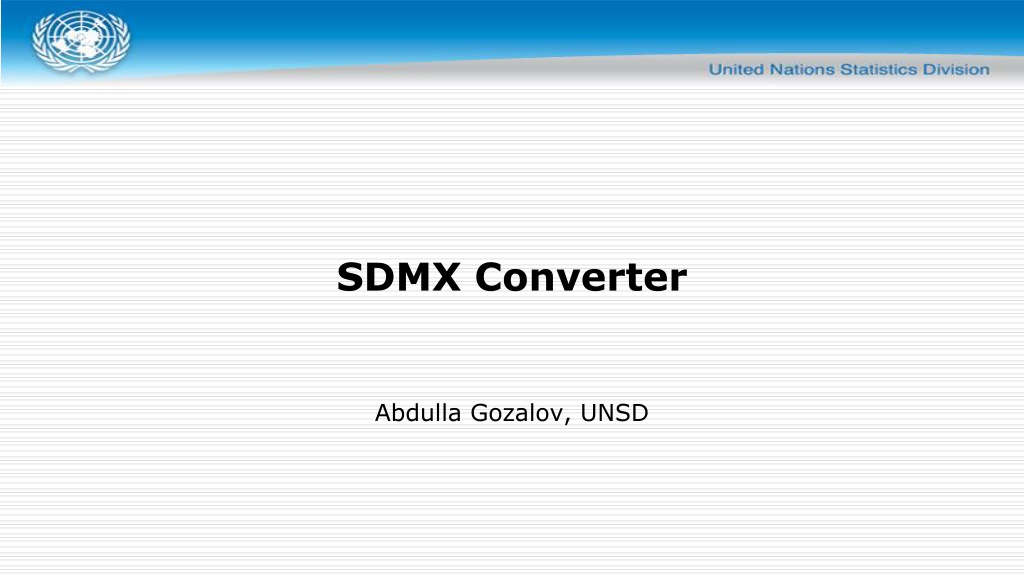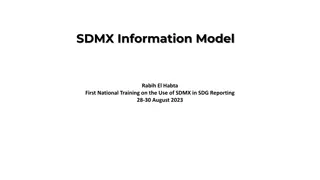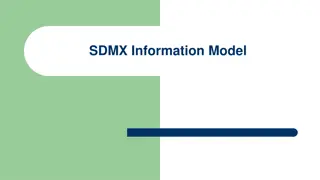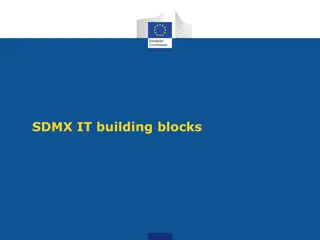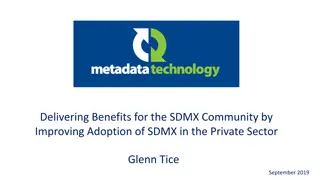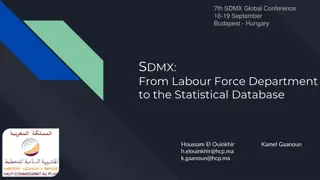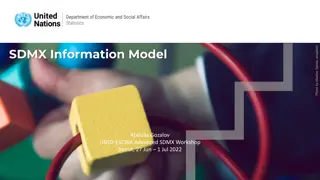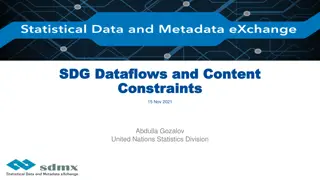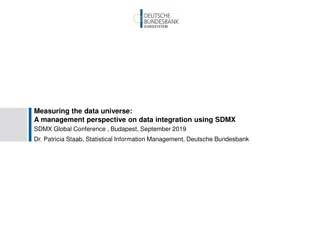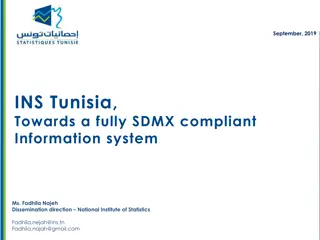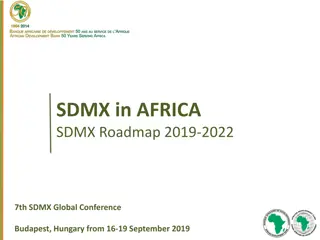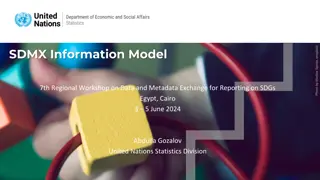Understanding SDMX Converter: A Tool for Data Transformation
SDMX Converter is a versatile tool developed by Eurostat that enables the conversion of data between various formats and SDMX. It supports formats like CSV, Excel, and DSPL, making it easy to transform non-SDMX data into the SDMX format. The tool comes in different applications like desktop, command-line, and web services, providing users with flexibility and ease of use. Converting data to SDMX involves setting up source data, Data Structure Definitions (DSD), and mappings, which can be efficiently done using Excel integration. The tool simplifies the process of converting and structuring data for SDMX exchange.
Download Presentation

Please find below an Image/Link to download the presentation.
The content on the website is provided AS IS for your information and personal use only. It may not be sold, licensed, or shared on other websites without obtaining consent from the author. Download presentation by click this link. If you encounter any issues during the download, it is possible that the publisher has removed the file from their server.
E N D
Presentation Transcript
SDMX Converter Abdulla Gozalov, UNSD
SDMX Converter Software developed by Eurostat Can be used to convert data from a variety of format into SDMX and vice versa Supports CSV, Excel, DSPL, and others Can be used to transform . Non-SDMX data to SDMX SDMX to non-SDMX SDMX format to another SDMX format
SDMX Converter: Applications SDMX Converter is available as Desktop application with a Graphical User Interface Command-line application Web service Java library NEW: Web application Download from https://ec.europa.eu/eurostat/web/sdmx- infospace/sdmx-it-tools/sdmx-converter
Converting data to SDMX To transform data to SDMX using the SDMX Converter, you need Source data as CSV, DSPL, Excel, etc. A Data Structure Definition (DSD) according to which the SDMX dataset will be structured Mappings that show how the source data maps to the concepts of the Data Structure Definition As always in setting up SDMX exchange, configuring mappings takes the most time and effort
Using SDMX Converter with Excel Data and mappings can be placed into the same spreadsheet Additional information can be added to facilitate data entry E.g. code lists for validation and display of descriptions
Worksheet names Worksheet named Parameters contains mappings Only one can be used at a time Shows how cells, rows, and columns map to the DSD dimensions and attributes Worksheet names starting with Val are ignored Can be used to store code lists or other ancillary information All other worksheets are considered to contain data and will be processed
Excel Mappings: the Parameters worksheet Mapping type Cell where data starts Concept Number of obs. columns Position or value Concept Role
Excel mappings worksheet Element: name of the DSD concept Type: role of the concept DIM: Dimension ATT: attribute DataStart: the first cell containing an observation NumColumns: number of observations per row
Column PosType: mapping or position type The following mapping/position types are supported: CELL ROW COLUMN FIX OBS_LEVEL MIXED SKIP
Mapping type: CELL The value for the entire worksheet is specified in the cell provided in the column Position E.g. if the spreadsheet is expected to only contain data for a single country, its code can be provided in a cell.
Mapping type: ROW Values for the concept are stored in the row specified in column Position
Mappings type: COLUMN Values for the concept are stored in the column specified in column Position
Mapping type: COLUMN (2) Also used with record-based representation, when row contains one record or observation, and each column holds values for one concept.
Mapping type: FIX Fixed value for the entire dataset is stored in the column Position and does not appear in the data spreadsheet E.g. if the data is always expected to be annual, frequency can be coded for the entire spreadsheet
Mapping type: MIXED The concept value is conditional Can be used to provide a default value Use cell B3 for concept REF_AREA. If the cell is empty, use fixed value TH
Mapping type: OBS_LEVEL Can be used in to specify attributes attached at the observation level relative to the cell containing the observation. E.g. when each row has multiple observations and their attributes. For attribute OBS_STATUS, use cell that is 1 column to the right of the cell containing the observation value. If that cell is empty, use the value in cell H14.
Mapping type: SKIP The concept value is not mapped Can only be used with optional attributes
Transcoding Transcoding refers to code mapping, when internal codes are different from DSD codes. With CSV and DSPL, you can configure transcodings in external files or specify them directly in the SDMX Converter. With Excel, SDMX Converter expects to find DSD codes in the spreadsheet.
